Health
Mak Researchers Partner with Safe Bangle Technologies to Roll out a Real-Time Domestic Violence Reporting Bracelet
Published
1 year agoon
By
Mak Editor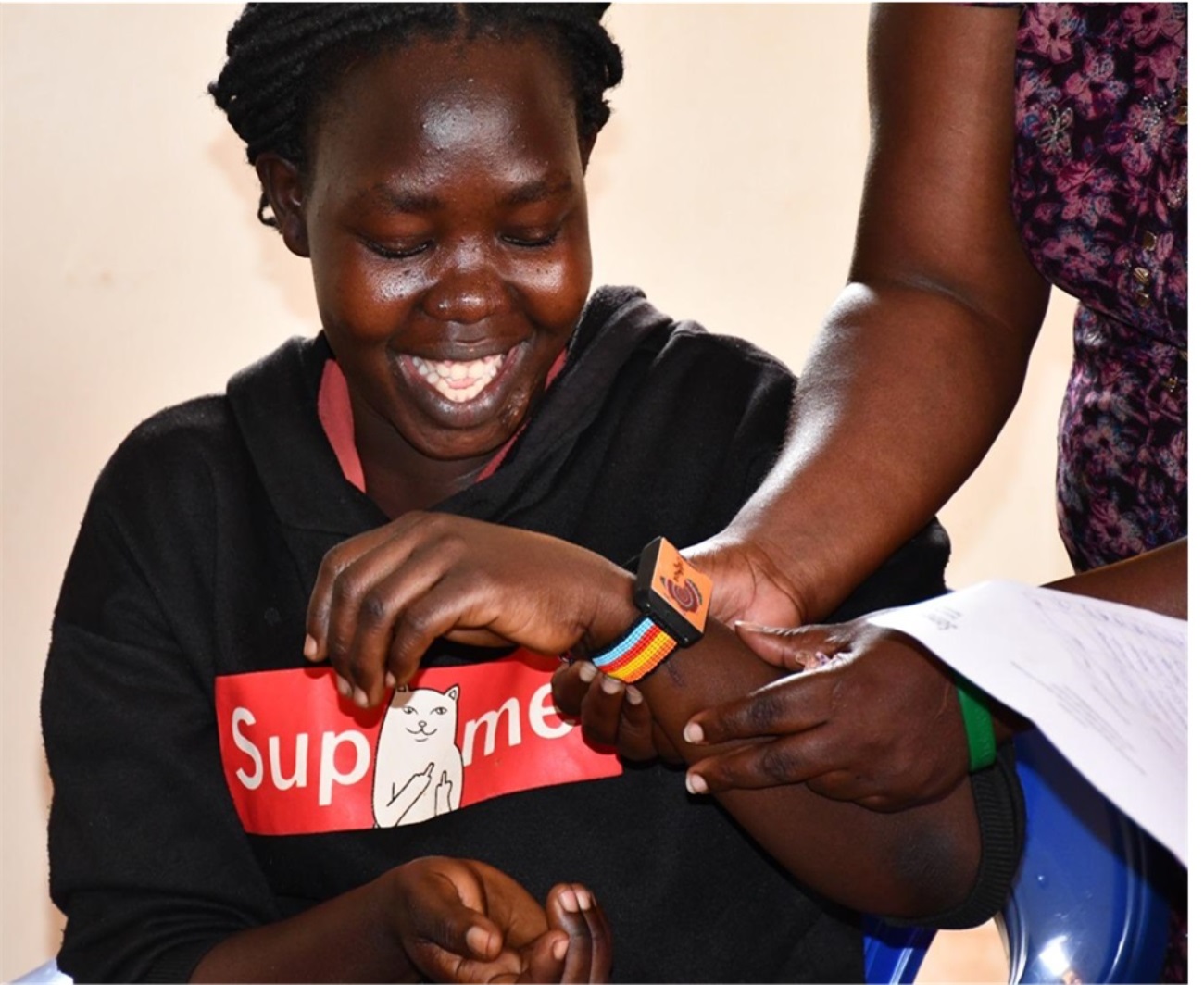
By Joseph Odoi
A Consortium of Researchers from Makerere University School of Public Health/Resilient Africa Network (MakSPH/RAN), Medical College of Wisconsin (MCW), Somero Uganda together with Safe Bangle Technologies have rolled out a real time domestic violence reporting bracelet.
This roll out was made possible with support from the United States Agency for International Development (USAID) under the PARTNERSHIPS FOR ENHANCED ENGAGEMENT IN RESEARCH (PEER) program and the National Academies of Sciences.
Dr. Juliet Kiguli, the Principal Investigator from Makerere University, along with Dr. Roy Mayega, Deputy Chief of Party at RAN, and Dr. Agnes Nyabigambo, the study coordinator, initiated the PEER program to identify entry points for testing SafeBangle Technologies (a social enterprise based at Resilient Africa Network (RAN) with a mission to create a safer and more secure environment for women and children through innovative, affordable, and creative technology solutions to curb GBV in Africa.) wearable safety bracelet in the informal settlements. This decision stemmed from findings of increased intimate partner violence (IPV) and gender-based violence (GBV) in three informal settlements in Kampala, Uganda, following a longitudinal study, geospatial mapping, and interviews. The project, titled ‘The Impact of the COVID-19 Pandemic on Gender-Based Violence among Women and Girls in Informal Settlements in Kampala,’ highlighted the urgent need for affordable and immediate reporting mechanisms for violence.”
‘’While carrying out a study after the Covid-19 Pandemic, we identified gaps when it comes to reporting and response to Gender Based Violence (GBV) among women in informal settlements. Therefore, we used incorporated the SafeBangle intervention to solve the problem of lack of affordable and immediate reporting mechanisms for violence using a bracelet that reports violence in real time’’ explained Dr. Kiguli.
Innovation details
According to Saul Kabali and Messach Luminsa, the innovators behind SafeBangle from SafeBangle Technologies, hosted at the Resilient African Network Lab. ‘’The inspiration behind SafeBangle came from a deeply personal place. ‘’We heard countless stories of women who couldn’t call for help during moments of danger. We were deeply affected by the story of Aisha, a young woman in a rural village who was attacked while walking home alone at night. With no way to call for help, she felt helpless and vulnerable. This incident made us realize the critical need for immediate reporting alert tools, accessible to women like Aisha. We knew technology could play a crucial role and this incident awakened a strong desire in us to create a solution’’
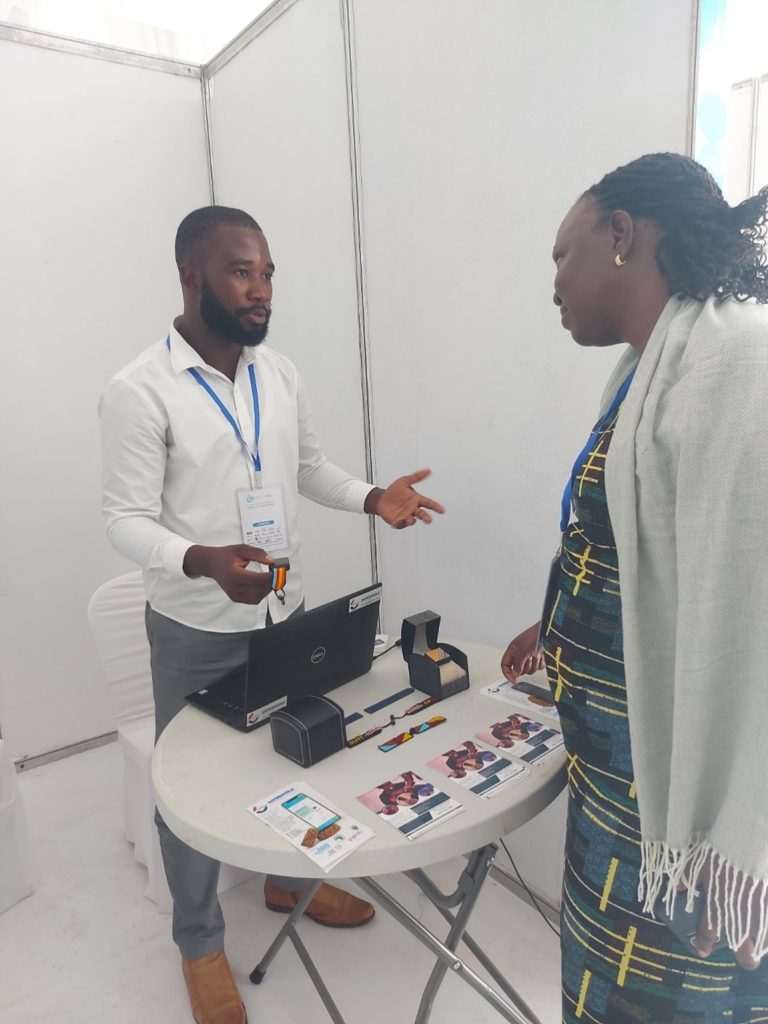
“While developing SafeBangle, we tested with the users in both rural and urban contexts. We piloted the innovation around Kampala with support from Digital Human Righs Lab and Naguru Youth Health Network as well as it in five districts of Karamoja region with support from Save the Children and Response Innovation Lab. Right now it has become handy in Kamapala‘s informal settlements. We envision a future where SafeBangle becomes a standard tool in the fight against GBV, ensuring every woman feels safe and secure as it has the potential to transform how we respond to GBV in Africa” added Kabali.
HOW THE SAFEBANGLE TECHNOLOGY WORKS
The SafeBangle is wearable technology similar to a smartwatch that sends an alarm by SMS to people chosen by a woman herself if she feels threatened.

In terms of the acceptability of the SafeBangle innovation as a solution to GBV among at-risk women in informal settlements Of the 72 adolescent girls and women who received the SafeBangle, 22 activated the reporting button, resulting in 19 receiving immediate and appropriate support, including counseling, police intervention, and health services.
All adolescent girls and women who experienced GBV received a phone call from Somero Uganda to discuss the most appropriate intervention, including counseling, police cases being handled by the probation office, referral for health services, and post-exposure prophylaxis. All the GBV survivors received support and are still receiving continuous follow-up.
Researchers conducted a survey among 644 girls and women in Kinawataka (Nakawa Division) and Bwaise (Kawempe Division) to gain insights into awareness and understanding of sexual and gender-based violence among adolescent girls and women in informal settlements. The survey measured socioeconomic factors, mental health symptoms, and exposure to GBV. Focus group interviews were conducted with a separate sample of women over 18 in the settlements to explore responses to GBV.
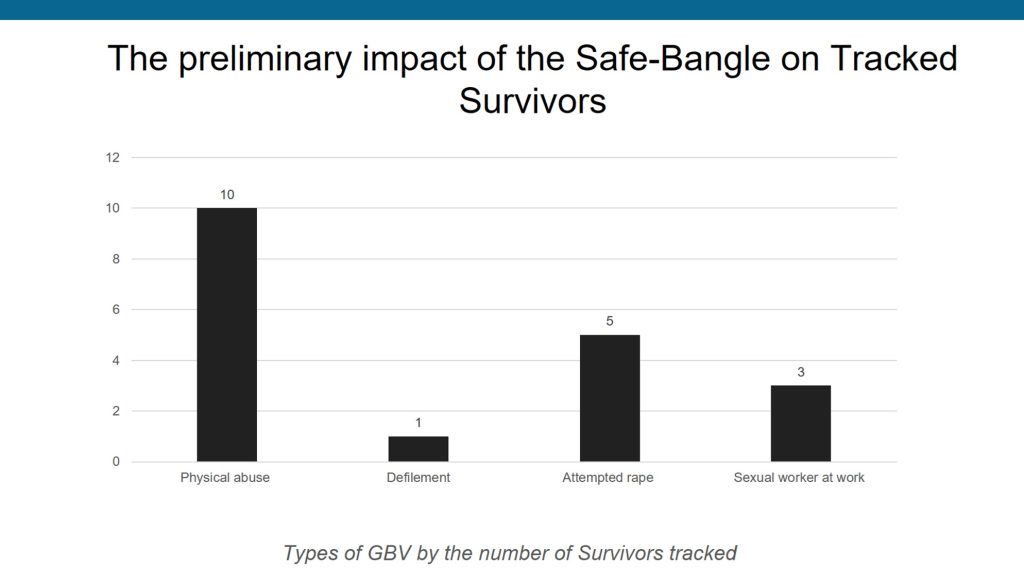
A tabular representation of the key findings and lessons learned from your study on gender-based violence (GBV)
| Key Findings | Lessons learned |
| Prevalence of GBV. – Overall prevalence: 34.1% of women and girls reported experiencing GBV. – Among adolescents (15-19 years): Over 50% reported experiencing GBV. | – The pandemic highlighted the need for accessible and comprehensive support services for GBV survivors. – Schools emerged as crucial safe spaces for girls, emphasizing their well-being during crises. – Economic independence proved crucial, enabling women to leave abusive environments. – Involving men and boys as allies in GBV prevention efforts is essential. |
| Age-related trends | – GBV prevalence tends to decrease with increasing age. |
| Physical and health consequences. | – Women and girls suffered physical violence, injuries, and deaths, primarily from domestic violence and unsafe abortions due to limited healthcare access. – GBV resulted in unintended pregnancies, unsafe abortions, and increased risk of sexually transmitted diseases (STIs) like HIV/AIDS. |
| Social and economic impact. . | – GBV contributed to family breakups, strained marriages due to financial stress. – Economic hardships forced some women and girls into transactional sex, exposing them to further health risks and exploitation. – Pandemic-related job losses and economic constraints increased financial dependence on abusers, trapping women in violent situations. – School closures and increased household responsibilities limited women’s job opportunities and subjected them to sexual harassment. |
| Psychological effects | – Survivors experienced guilt, shame, anxiety, fear, and suicidal thoughts due to ongoing abuse. |
| Long-term effects | – Post-COVID-19, survivors faced disrupted education, early marriages, pregnancies, social stigma, and persistent mental health issues. |
Reproductive Health Consequences: GBV resulted in unintended pregnancies, unsafe abortions, and increased risk of sexually transmitted diseases (STIs) like HIV/AIDS.
Family Breakdown: The rise in GBV led to family breakups as women fled abusive relationships. Marriages were strained due to increased financial stress.
Transactional Sex for Survival: Desperate for basic needs due to job losses and economic hardship, some women and girls resorted to transactional sex, exposing them to further health risks and exploitation.
One study participant stated, “The time of COVID-19 was so terrible for some of us. We in fact got a lot of diseases from it because you would want to get food and didn’t have money. That way you would be forced to get a man who would use you and pay.” – (FGD_Girls_19–24years_Kinawataka).
Economic Effects: COVID-19 restrictions caused job losses and limited economic opportunities, particularly for women in the informal sector. This increased financial dependence on abusers and trapped women in violent situations.
Limited Access to Employment: School closures and increased household chores limited women’s ability to seek employment, perpetuating gender inequality in the workforce. Some faced sexual harassment from potential employers.
Psychological Effects: Survivors of GBV experienced guilt, shame, anxiety, fear, and even suicidal thoughts due to the constant threat and unpredictability of abuse.
Post-COVID Effects: GBV survivors faced long-term consequences, including disrupted education, early marriage, early pregnancy, social stigma, and persistent mental health issues.
Lessons learned
The pandemic highlighted the need for accessible and comprehensive support services for survivors of GBV, the significance of schools as safe spaces for girls, and the need to prioritize their well-being during crises. Economic empowerment emerged as a significant protective factor for women and girls. Those with greater economic independence were better equipped to leave abusive environments and secure their safety and well-being, while dependent ones suffered abuses. Engaging men and boys as allies in the fight against GBV and involving them in prevention efforts can help promote positive behavior change and foster more equitable relationships.
Recommendations
To address GBV against women and girls, the researchers recommend the following moving forward;
- There is need to integrate technology-driven solutions like SafeBangle into national GBV prevention and response strategies. SafeBangle can be a valuable tool for policymakers as cases of violence that would have gone unreported will be brought to light and the would-be victims will be able to get immediate help from trusted relatives and friends.
- Provide economic opportunities and vocational training for women and girls to enhance their financial independence and reduce vulnerability to violence. There is therefore a need to introduce education and training programs that empower women and girls, by providing them with skills, resources, and opportunities to start their own ventures and to participate fully in community affairs.
- Strengthen and enforce existing laws and policies related to GBV, including laws against domestic violence, child marriage, and sexual assault without discrimination be it for law enforcers, leaders, and employers where such cases were suffocated. Ensure that perpetrators are held accountable through swift and fair legal processes that have no room for corruption.
- Establish and promote effective, accessible, and confidential reporting mechanisms for GBV incidents that provide confidence and can be trusted by survivors to enhance reporting of such incidences of GBV. Community Engagement and Involvement: Involve community leaders, religious leaders, and elders in discussions about GBV to promote gender equality, change social norms, and reinforce the message that violence against women and girls is unacceptable.
- Launch extensive public awareness campaigns to challenge harmful gender norms, report cases of GBV, raise awareness about the consequences of GBV, and promote positive behaviors and attitudes towards women and girls.
- Implement comprehensive sexuality education in schools and communities, educating young people about healthy relationships, consent, and reproductive rights to be able to make informed decisions about their own lives and well-being.
- Engage men and boys as allies in the fight against GBV, encouraging them to challenge harmful masculinity norms and behaviors. This will help minimize GBV because mostly they are the perpetrators. Strengthening Support for Survivors: Provide ongoing support and follow-up services for survivors of GBV mostly counselling services to aid their recovery and facilitate their reintegration into society.
- Provide ongoing support and follow-up services for survivors of GBV, mostly counseling services to aid their recovery and facilitate their reintegration into society.
- Provide avenues to seek free or subsidized services by survivors of GBV medical services and legal processes by survivors of GBV to enhance reporting of GBV cases, access to medical care, counseling, legal support, and other essential services.
- Encourage and support more research and innovations like SafeBangle to curb incidents of GBV.
- A comprehensive and inclusive approach is required. The efforts should involve government institutions, civil society organizations, community leaders, and individuals working together to address the root causes and provide support to survivors.
- Involve media in GBV prevention activities and for enhancing campaigns against GBV mostly on radio and TV.
MORE ABOUT THE STUDY
The core project team, included researchers at Makerere University School of Public Health (MakSPH), Medical College of Wisconsin (MCW) led by Prof. Julia Dickson-Gomez, SafeBangle Technologies, and Somero Uganda, a community-focused NGO, began the project by designing their research protocol and taking a CITI Program course on human subjects social/behavioral research. Team members also met with the Ministry of Gender, Labour, and Social Development (MGLSG) in support of the gender-based violence policy process, Ministry of Health and local government. They also established relationships with the Kampala Capital City Authority (KCCA) and Nakawa and Kawempe probation offices to support legal processes for the GBV survivors. SafeBangle Team also received an award from Defenders Protection Initiative.
You may like
-


How transformative education is shaping Africa’s next generation of innovators
-
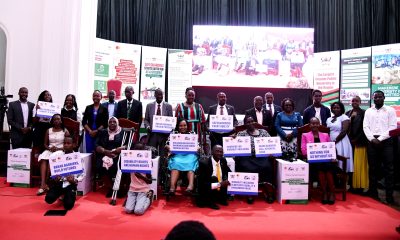

Reflecting on Strides made in Championing Inclusive Education
-
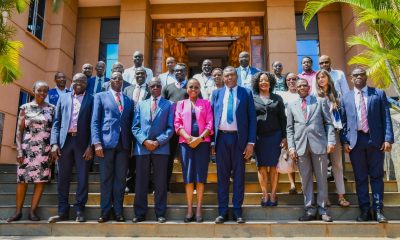

IDI launches the Sewankambo Training Program for Global Health Security in Africa
-
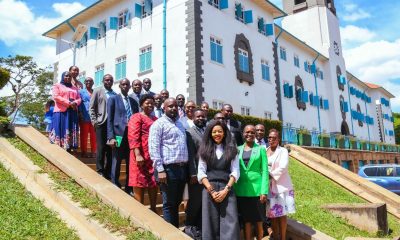

Makerere University Hosts Ambassador Judyth Nsababera for Strategic Dialogue Advancing Uganda–China Engagement
-


In Honor of the Life and Legacy of Mr. Francis Seletze Ngabirano-A Steady Hand through the Storms
-
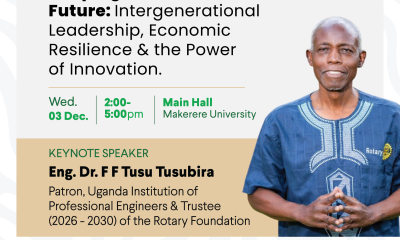

Illuminating Visionary Leadership: Introducing the Keynote Speaker for the 2025 Emmanuel Tumusime Mutebile Annual Public Lecture

The Sub-Saharan African Network for TB/HIV Research Excellence (SANTHE) at Makerere University invites applications for a PhD and Masters of Science training opportunity.
The PhD training is focused on HIV Cure whereas the Masters of science opportunity is for TB elimination. Refer to the adverts/flyers attached for further details.
For inquiries or clarifications please call +256 787-278-393.
Health
International Coordination Office Newsletter, Issue 1 Jan–Jun 2025
Published
6 days agoon
November 28, 2025By
Mak Editor
Dear Readers
We welcome you to our first edition of the international academic mobility newsletter from Makerere University College of Health Sciences. In this edition, we share the highlights of various academic mobility programs at MakCHS, experiences of several students and staff who have been able to travel, study and experience new cultures and skills aimed at increasing their competitiveness in the Global market. We also share challenges and improvements to improve student and staff academic mobility experiences.
Internationalization of higher education is defined by the OECD (1999) as the integration of an international/intercultural dimension into all the activities of a university, including teaching, research and service functions. This is in line with the Makerere University vision 2030 to become a research-led university. This cross-border movement of faculty in higher education has been attracting scholarly attention for decades since knowledge is borderless (Shen et al., 2022). Therefore, internationalization increases global higher education and impacts the world university rankings, with a goal of increasing international recruitment of the best and brightest students and scholars. These international academic mobilities offered at MakCHS involve a broad range of activities like attending conferences, visiting research partners abroad and longer stays in other countries for research purposes.
MakCHS has many academic partners with long-standing bilateral relations and agreements that go beyond academic mobility and thus has overtime developed procedures and quality control mechanisms to support academic mobility. The coordination of these academic mobilities is handled at the International Coordination Office. The office is also responsible for the administration and making sure that students and faculty have a memorable experience. It is also responsible for monitoring and reporting tasks and managing the organizational support and coordination, incoming participants’ comprehensive insurance coverage, registrations, social activities and guided city tours for incomings etc.
We look forward to learning with you, celebrating progress, and charting our next steps—together, as we build for the future.
Enjoy your reading
Dr. Mark Kaddumukasa
Associate Professor
PROGRAM DIRECTOR
View the newsletter using the link below:
ICO Newsletter 2025 Issue 1
Health
IDI launches the Sewankambo Training Program for Global Health Security in Africa
Published
6 days agoon
November 27, 2025By
Eve Nakyanzi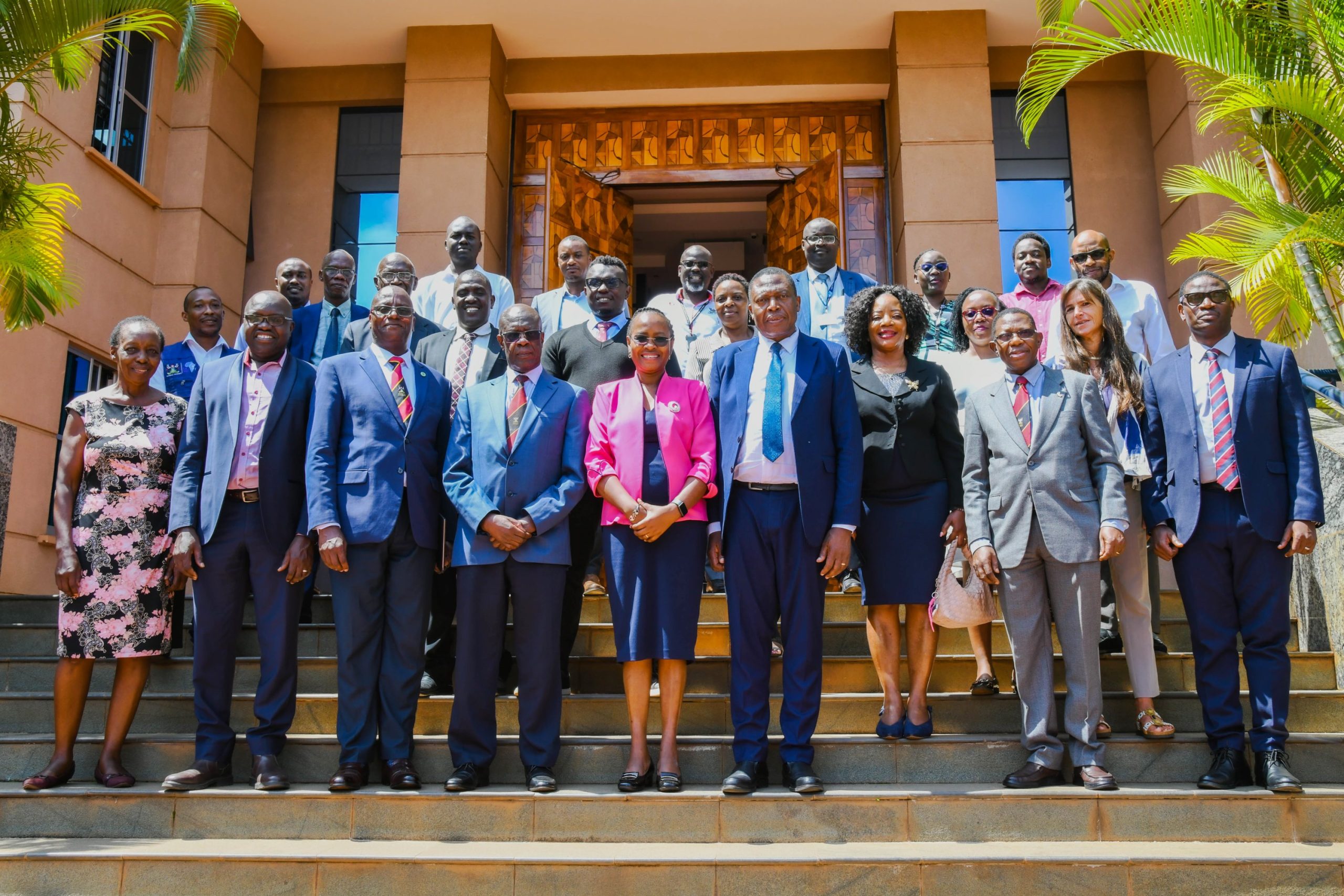
On 27th November 2025 the Makerere University Infectious Diseases Institute (IDI) unveiled the second cohort of fellows—marking a significant step forward in strengthening global health security across the region. The cohort brings together five exceptional emerging scientists whose research areas reflect the continent’s most urgent health priorities. They include Mr. Dickson Aruhomukama in Antimicrobial Resistance (AMR); Dr. Rodgers Ayebare in Case Management, Infection Prevention and Control; Mr. Julius Okwir in Epidemic Intelligence and Community Health; Dr. Robert Zavuga in Vaccines and Medical Counter Measures; and Ms. Phionah Tushabe in Planetary Health, Water, Sanitation and Hygiene (WASH). Their selection marks a new chapter in nurturing homegrown expertise capable of safeguarding Africa’s health systems for generations to come.
The Acting Vice Chancellor, Prof. Sarah Ssali while presiding over the event emphasized the significance of launching the Sewankambo Training Program for Global Health Security as a milestone not only for IDI but for Makerere University and the continent at large. She highlighted the urgency of strengthening Africa’s capacity to predict, prevent, and respond to emerging epidemics, noting the rapid rise in zoonotic disease outbreaks and the persistent weaknesses exposed by crises like Ebola and COVID-19. She celebrated the legacy of Prof. Nelson Sewankambo and the scholars shaped by his leadership, stressing that the program embodies the university’s commitment to producing transformative health leaders grounded in multidisciplinary expertise and One Health principles.
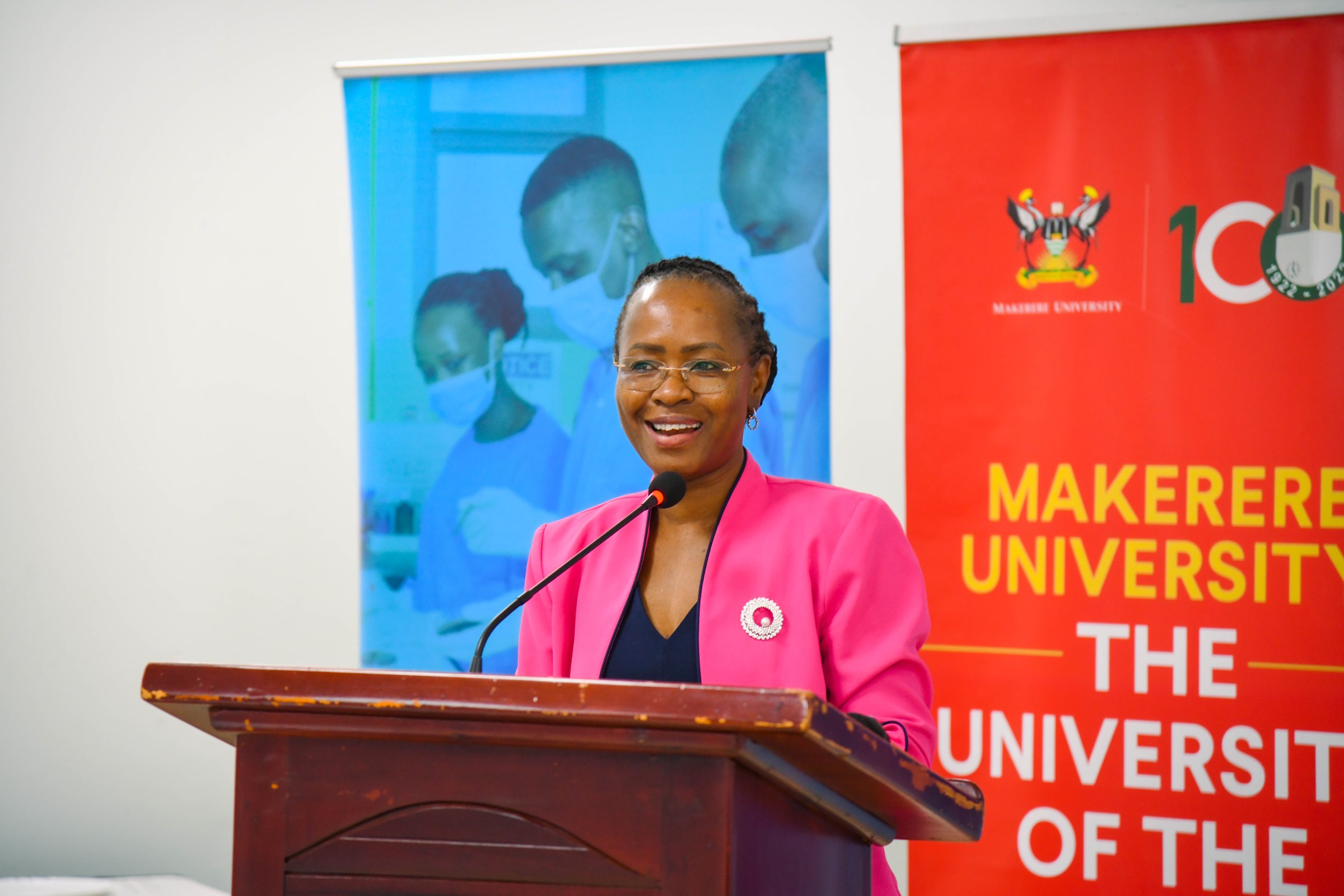
She also called for stronger collaboration across colleges—particularly with the College of Veterinary Medicine, Animal Resources and Biosecurity (CoVAB)’s Center for Biosecurity and the College of Health Sciences (CHS) to ensure that scarce scientific resources are fully utilized and that future health professionals are prepared for an evolving global landscape. In closing, she reaffirmed Makerere University’s dedication to advancing research excellence, nurturing responsible stewardship, and upholding the values that define the Sewankambo legacy.
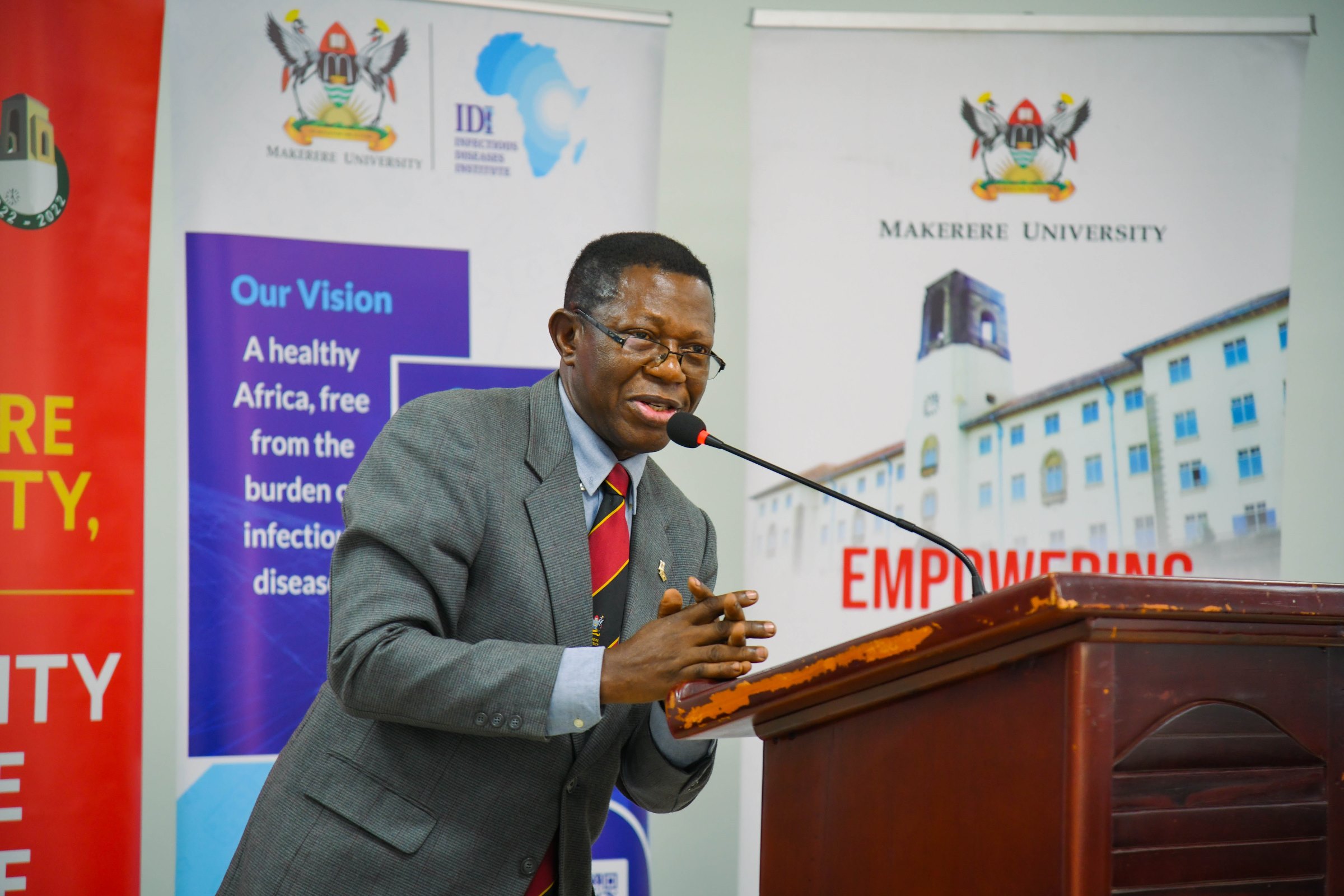
The Academic Registrar Prof. Buyinza Mukadasi also conveyed his heartfelt congratulations to IDI and Prof. Nelson Sewankambo upon this remarkable milestone. He reflected on his recent engagements with the Institute—most notably the launch of the African Centre of Excellence in Bioinformatics—and expressed his admiration for the world-class research emerging from IDI, including publications in leading journals such as The Lancet and Nature. He noted that Makerere takes great pride in IDI’s work across multiple initiatives, from THRiVE to ongoing research collaborations, and wished the newly launched fellows a rewarding and impactful journey in research.
The Deputy Principal CHS, Prof. Richard Idro congratulated the new cohort and welcomed them into what he fondly referred to as “the cookhouse,” where future scientific leaders are shaped. Drawing from his own formative encounters with Prof. Nelson Sewankambo, he reflected on the deep mentorship culture that has defined generations of clinicians and researchers at Makerere—sharing stories of being challenged, supported, and pushed toward excellence. He reminded the fellows that their research will influence health policy and clinical practice far beyond individual patients, carrying long-term implications for national and global health.
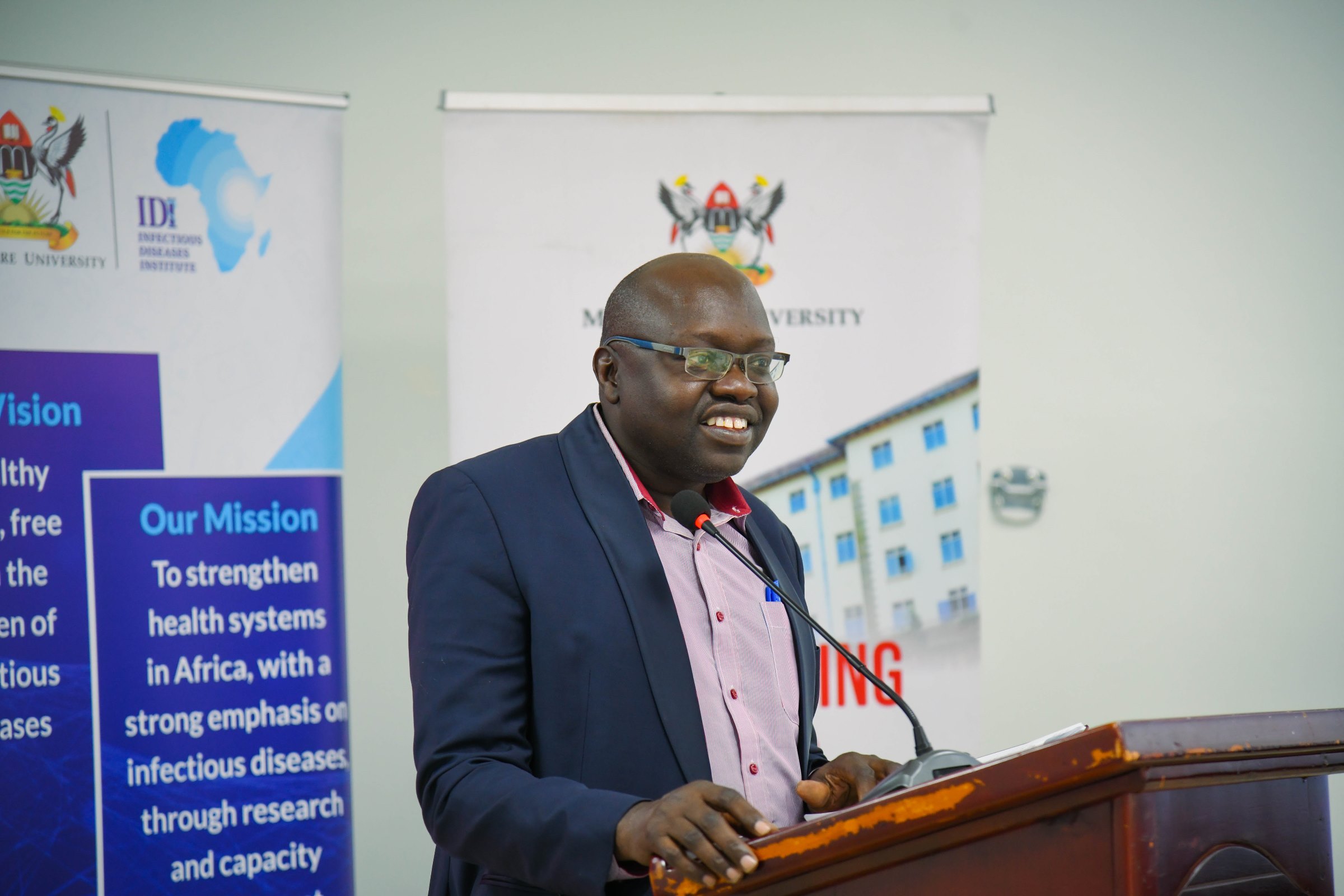
Prof. Idro also acknowledged the critical challenges facing clinical disciplines, especially the constraints of promotion pathways that disadvantage highly skilled specialists without PhDs. He appealed for reforms to safeguard the future of key fields like anesthesia and surgery. Closing his remarks, he celebrated the College’s 100-year legacy, expressed gratitude for the university’s continued support, and invited alumni and partners to contribute ideas that will shape the next century of innovation, training, and service.
Dr. Charles Olaro, the Director General of Health Services, highlighted the essential role of academia in strengthening Uganda’s global health security, noting how recent outbreaks—from COVID-19 to Ebola—have revealed both the country’s progress and remaining gaps. He emphasized that programs like the Sewankambo Training Program are vital for building resilient health systems, advancing research, and shaping policies that can respond swiftly and effectively to public health threats.
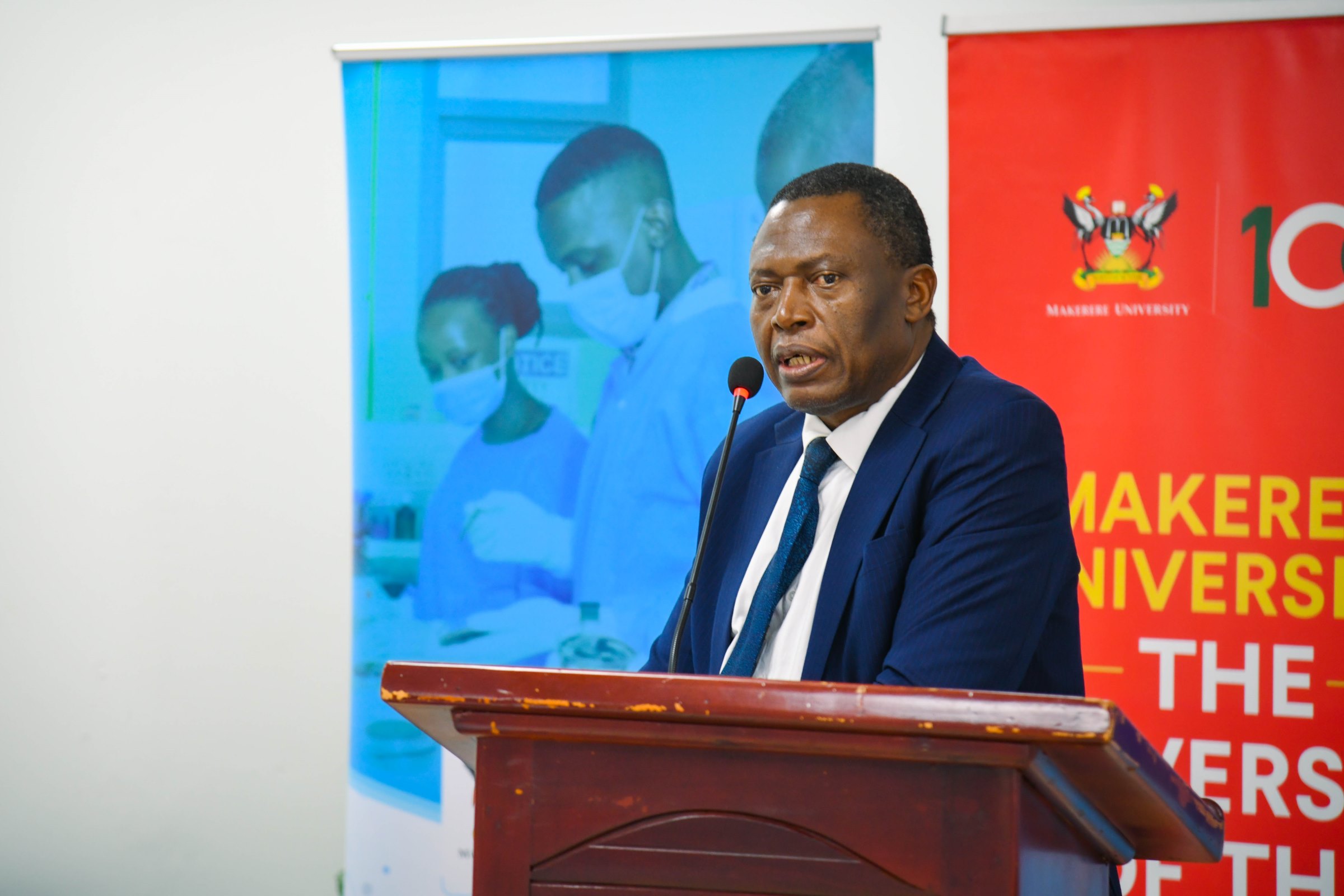
Reflecting on the strong collaboration between the Ministry of Health and institutions such as Makerere University and IDI, he pointed out how research emerging from academia continually informs national policy, including work presented at recent conferences on non-communicable diseases and community health. Dr. Olaro congratulated the new cohort, reminding them that their work carries significant responsibility, as their research and leadership will influence health outcomes far beyond individual clinical care. He also underscored the need for stronger regional capacity, improved emergency response systems, and sustained mentorship to ensure that communities across Uganda—and the region—benefit from timely, coordinated outbreak preparedness.
In his address, Prof. Nelson Sewankambo commended the achievements of the first cohort and challenged the new fellows to uphold—and even surpass—the high standards already set. Reflecting on the rigorous selection process, he reminded the cohort that they were chosen because they demonstrated exceptional promise in a highly competitive field. He noted that the launch of this program comes at a particularly critical moment, as Africa CDC has just established a new Division for Health Security and Sovereignty, even as global financing for health research continues to decline. This, he said, makes the commitment to sustaining the program both bold and necessary.
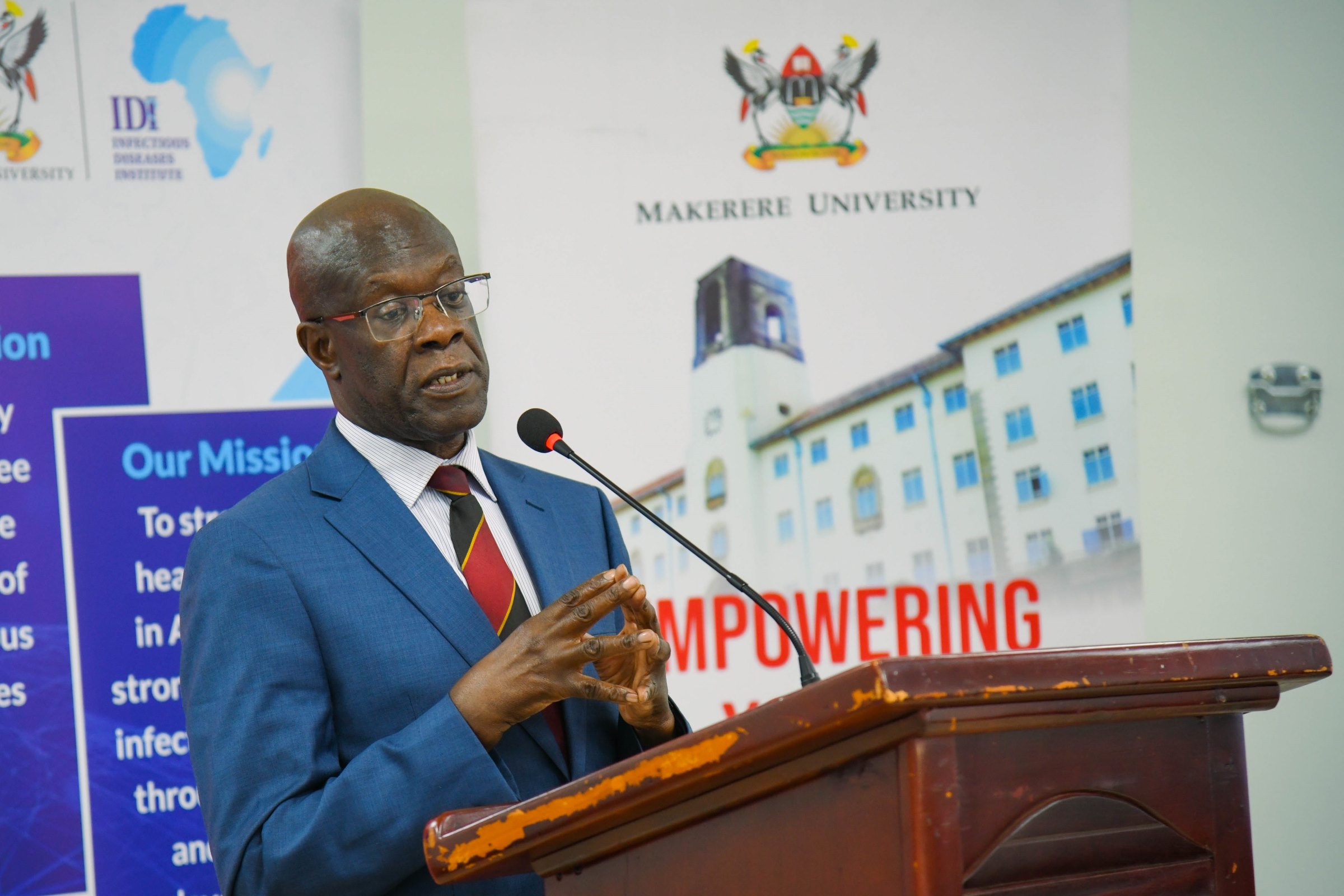
Prof. Sewankambo also addressed concerns about the future of clinical scholars at Makerere, arguing that rigid promotion policies risk driving away talented specialists who are vital to the university’s mission. Emphasizing that “it is wise people who change direction when it is necessary,” he urged university leadership to protect pathways that allow clinicians to grow, serve, and undertake PhDs without being pushed out of the system. His message underscored both the responsibility carried by the new fellows and the collective duty to safeguard the future of medical education and research.
Dr. Andrew Kambugu, Executive Director (ED) of IDI, warmly welcomed all guests and reflected on the Institute’s long-standing culture of adaptation and innovation in response to Africa’s evolving health challenges. He celebrated the presence of Prof. Nelson Sewankambo—honoring his legacy as a founder, mentor, and active research collaborator—and acknowledged the strength of Cohort One as a living example of what the program can produce.
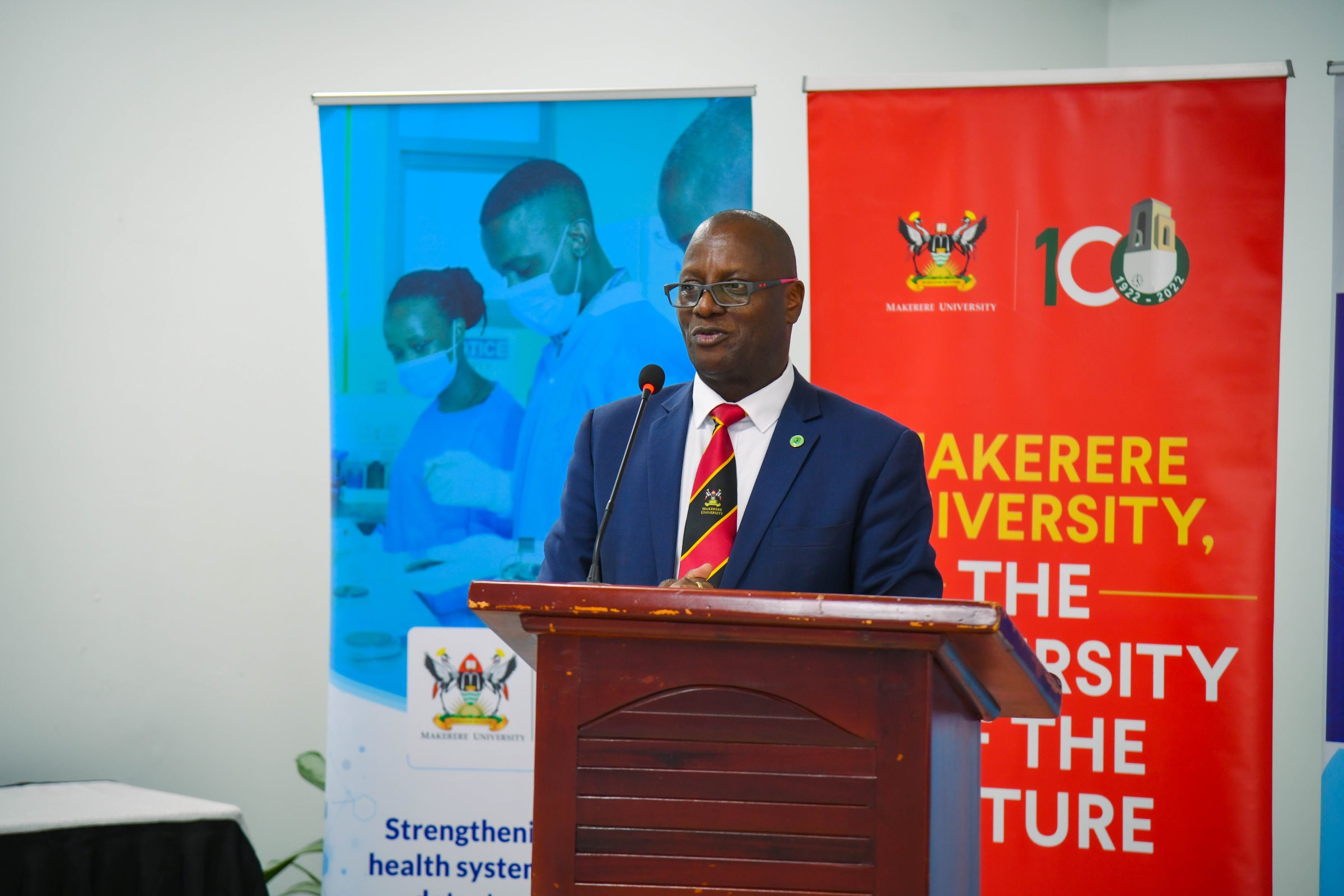
The ED emphasized that the Sewankambo Program stands on three pillars: rigorous selection, structured support with clear accountability, and strong alignment with national health priorities. He reminded the new fellows that IDI itself was born from the principle “adapt or perish,” and urged them to carry forward that spirit as they confront emerging threats like antimicrobial resistance and disease outbreaks across the continent. He also reflected on the power of mentorship, sharing personal experiences that illustrated how deeply mentorship can shape a scientific career. In closing, he expressed confidence that the five new fellows will honor the name they bear and continue building a legacy that inspires future generations.
Prof. Harriet Mayanja-Kizza reminded the newly selected fellows that while this achievement is significant, it marks only the beginning of a demanding but deeply meaningful journey. She expressed pride in the diversity of the cohort—drawn from ten African countries—and noted with delight that one of the brightest candidates emerged from the smallest country represented.
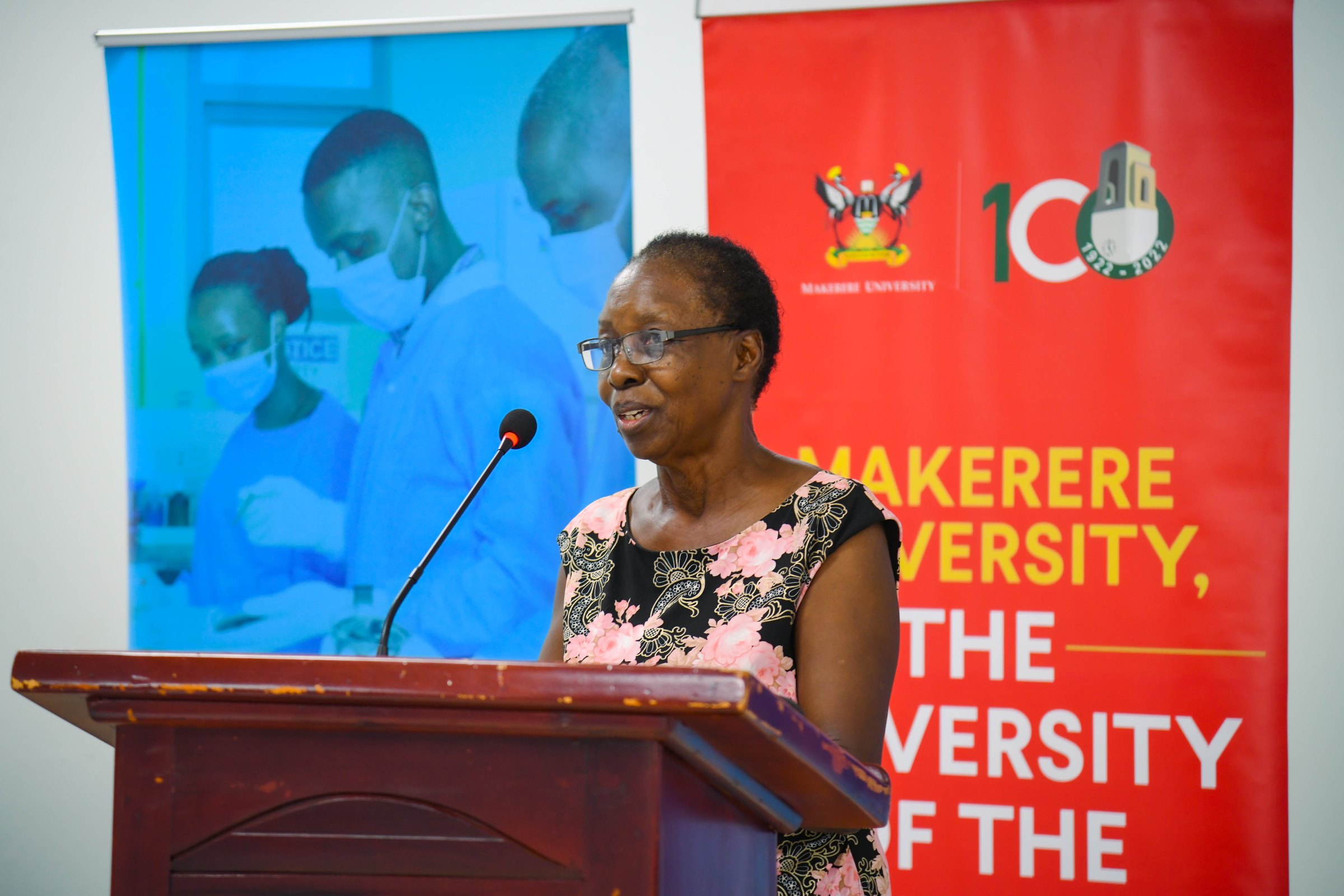
Reflecting on the evolution of impactful careers, she encouraged young people to embrace emerging fields such as bioinformatics, biotechnology, AI, molecular biology, and biostatistics, which she believes will define the future of science and global health. Prof. Mayanja spoke passionately about the diseases the fellows will tackle, highlighting the severe threat of antimicrobial resistance, the persistent burden of malaria, the dangers of resurfacing viral infections, and the transformative power of immunization. She urged the fellows to stay grounded, stay committed, and embrace the modern, data-driven tools now shaping global health research. In closing, she celebrated their potential to make a global impact and welcomed them formally into a field where their work will shape healthier futures for generations to come.
Prof. Ponsiano Ochama, one of the pioneers from the first cohort, reflected on the journey of the Sewankambo clinical scholarship from its early days in the “cookhouse” to the strong, structured program it has become. He recounted how the scholarship began as a mentorship-driven initiative aimed at nurturing future researchers and how sustained advocacy eventually removed barriers that once limited clinical scholars’ progression.
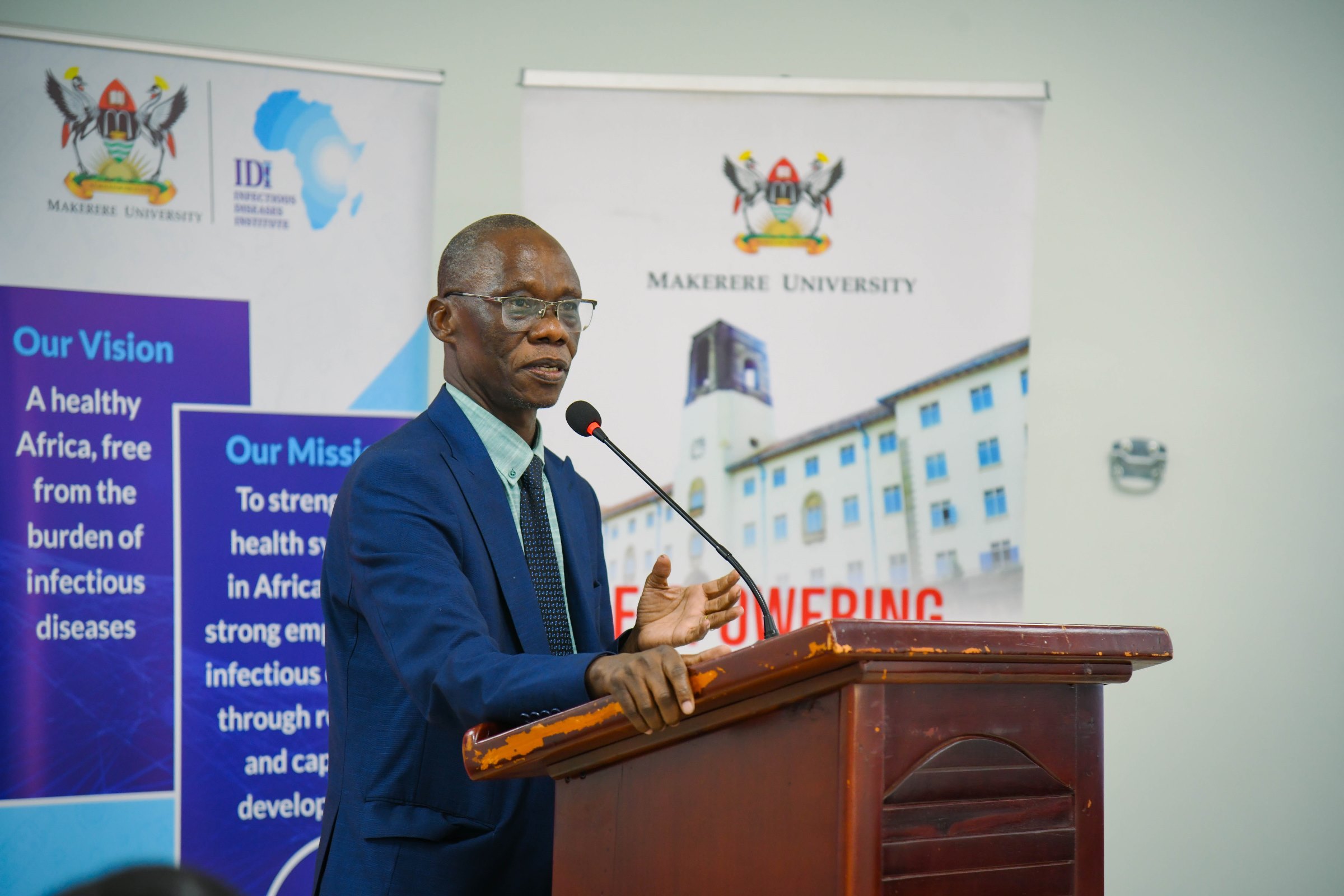
Prof. Ochama shared the impactful work he and his colleagues have since undertaken—highlighting, for example, a national study on hepatitis B mother-to-child transmission that shaped recent Ministry of Health policy. He encouraged the incoming cohort to embrace the program fully, assuring them that the “cookhouse” experience will transform them into strong, skilled scientists whose work will influence health policy and improve lives across the country.
Dr. Byonanebye Dathan, Deputy Head of the Global Health Security Department, outlined the strong rationale behind the Sewankambo Global Health Security Program, noting Africa’s rising burden of zoonotic and viral hemorrhagic fevers and the continent’s limited capacity for early detection and response. He emphasized that despite competing health priorities—HIV, TB, malaria, maternal health—there remain significant gaps in surveillance systems, workforce capacity, and research preparedness.
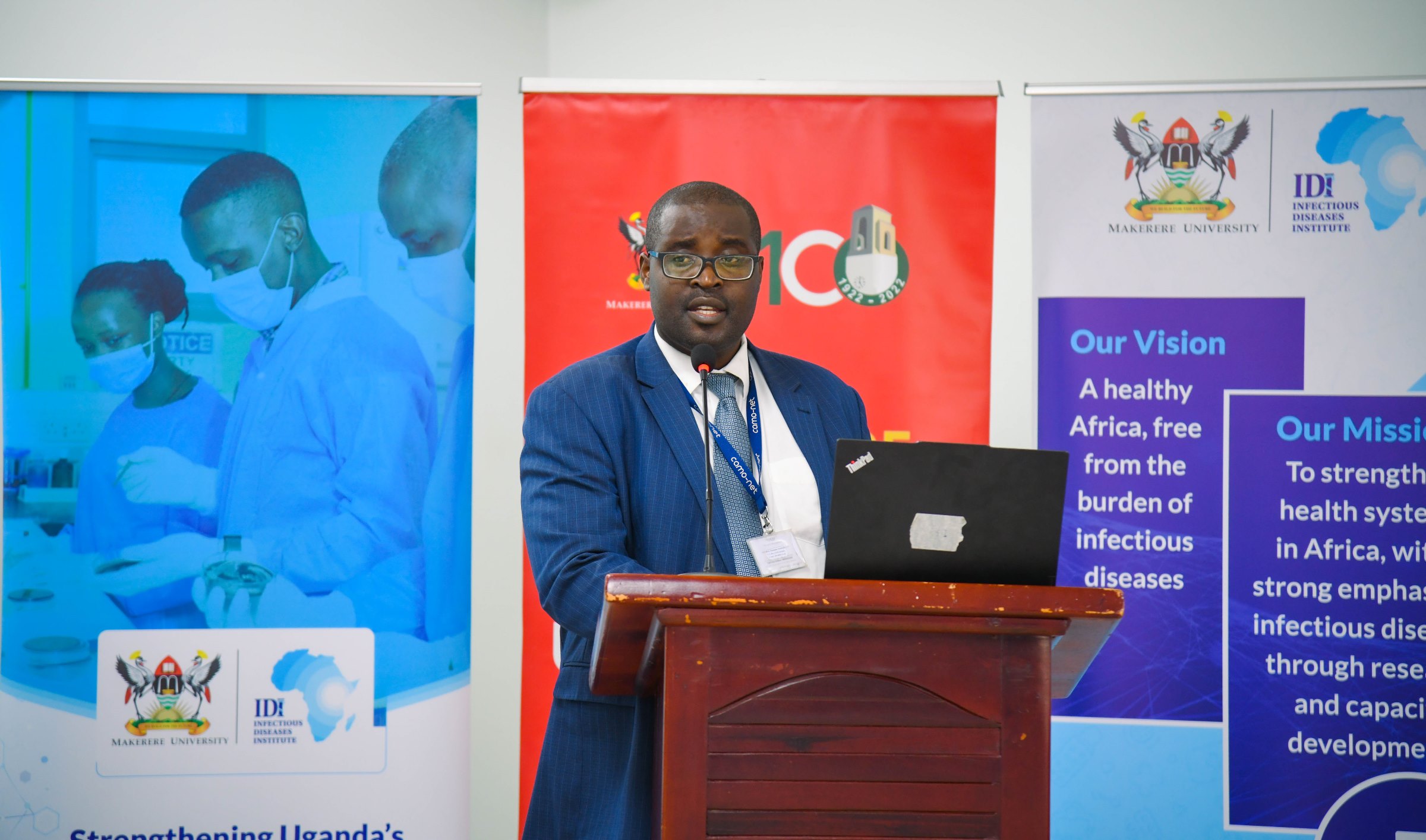
The program, he said, is designed to fill these gaps by strengthening research training, developing a skilled outbreak response workforce, and building a network of experts across Africa capable of generating evidence that directly informs policy and improves health systems. Dr. Dathan highlighted the rigorous selection process, the program’s alignment with WHO and national public health frameworks, and its integration of emerging technologies such as AI and machine learning. He affirmed that the fellows will receive structured mentorship, leadership development, and hands-on experience using existing data and real-world outbreak response systems—ensuring that their work leads not only to publications, but to meaningful impact across the continent.
Dr. Francis Kakooza, Acting Head of Global Health Security, traced the remarkable evolution of IDI’s Global Health Security work over the past decade, from its early CDC-funded surveillance efforts in 2015 to its expansion into biosecurity, AMR, epidemic research, policy development, and regional outbreak support. He highlighted IDI’s role in major national initiatives—including COVID-19 response, vaccination rollouts, risk management, lab accreditation, and the establishment of Regional Emergency Operations Centers—as well as its growing continental footprint through partnerships with Africa CDC, Mastercard Foundation, and Resolve to Save Lives.
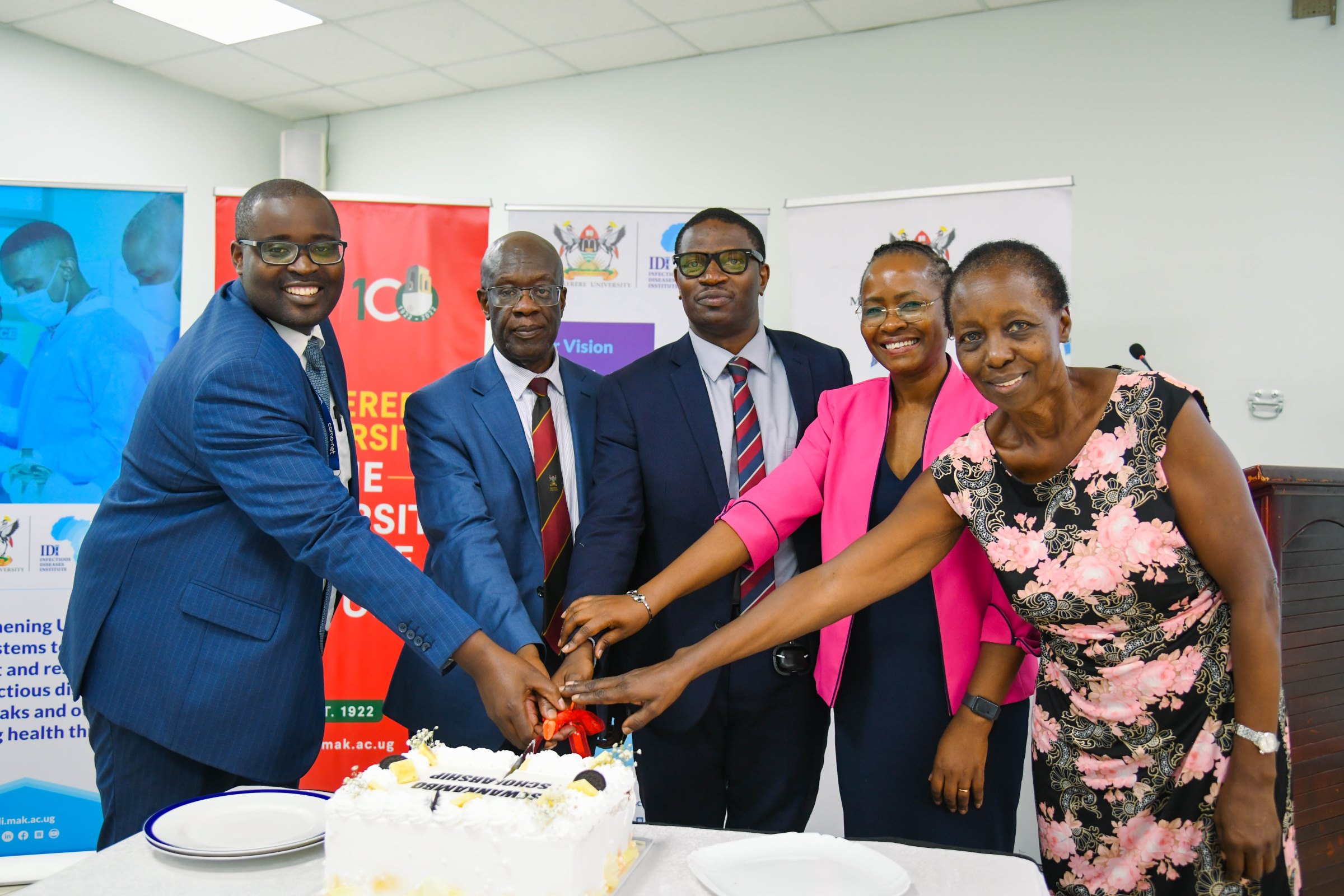
Dr. Kakooza emphasized that the launch of the Prof. Nelson Sewankambo Global Health Security PhD Program is the culmination of years of investment in strengthening African research capacity and supporting fellows whose work is already shaping policy. He expressed gratitude to all partners, mentors, and leaders who contributed to the program’s development, acknowledged the rigorous selection that yielded five fellows from ten countries, and reaffirmed IDI’s commitment to nurturing a new generation of scientists equipped to protect the continent from infectious disease threats.
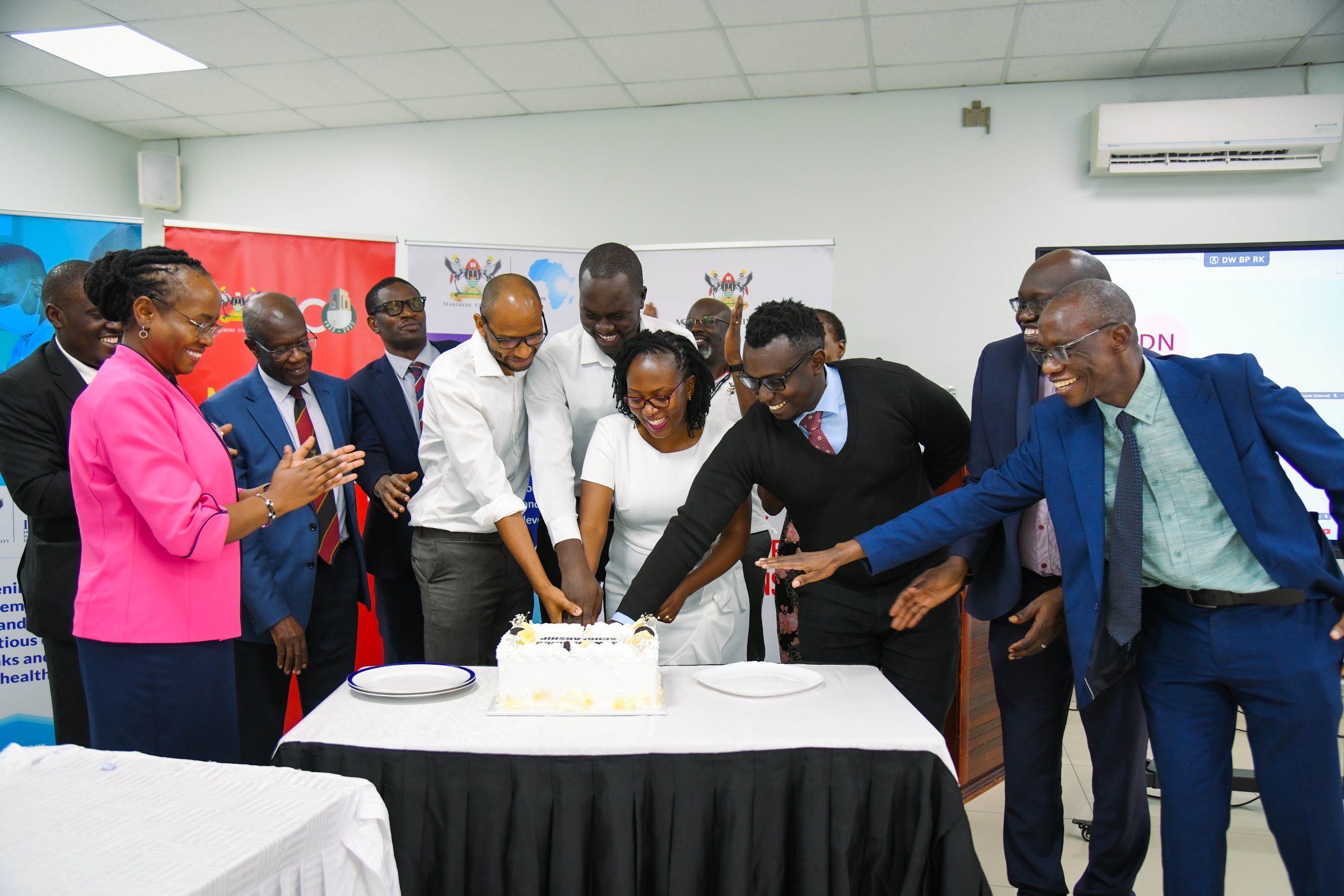
Trending
-

 General1 week ago
General1 week agoIn Honor of the Life and Legacy of Mr. Francis Seletze Ngabirano-A Steady Hand through the Storms
-

 Health6 days ago
Health6 days agoIDI launches the Sewankambo Training Program for Global Health Security in Africa
-

 Engineering, Art & Tech1 week ago
Engineering, Art & Tech1 week agoErasmus Exchange Prof.’s Mak Photo wins Poland National Prize
-

 General1 week ago
General1 week agoMakerere University Hosts Ambassador Judyth Nsababera for Strategic Dialogue Advancing Uganda–China Engagement
-
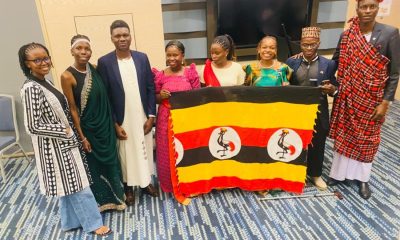
 General1 week ago
General1 week agoMakerere Students share experiences, connections and inspiration at inaugural For Youth, By Youth Conference in Turkey
